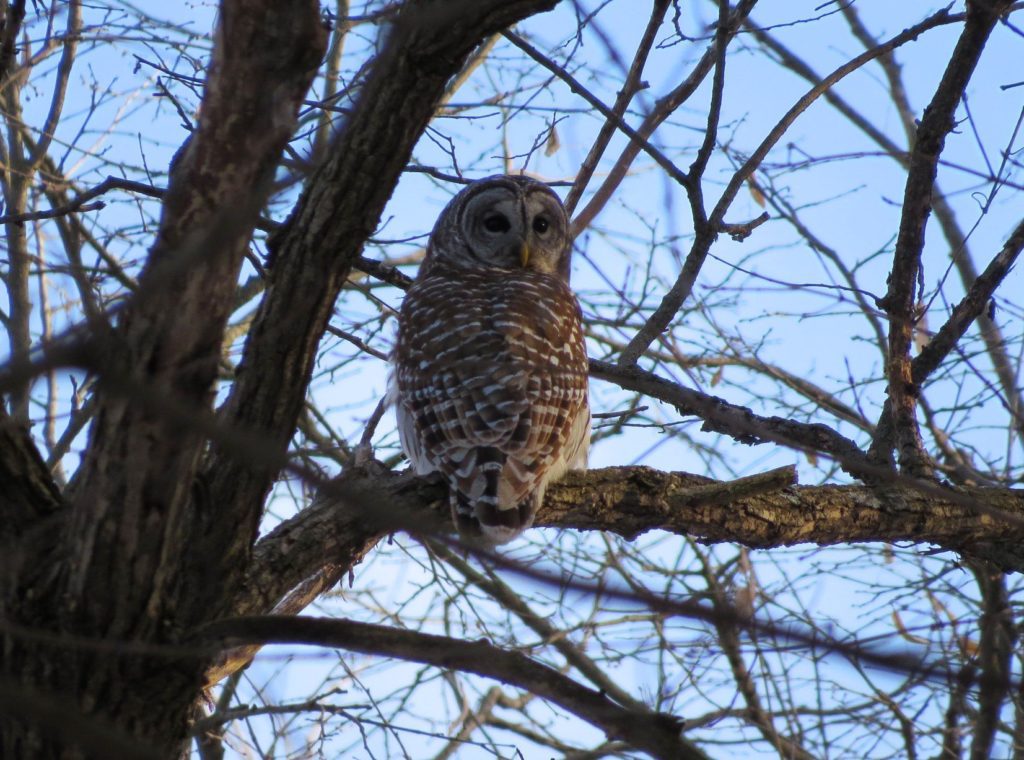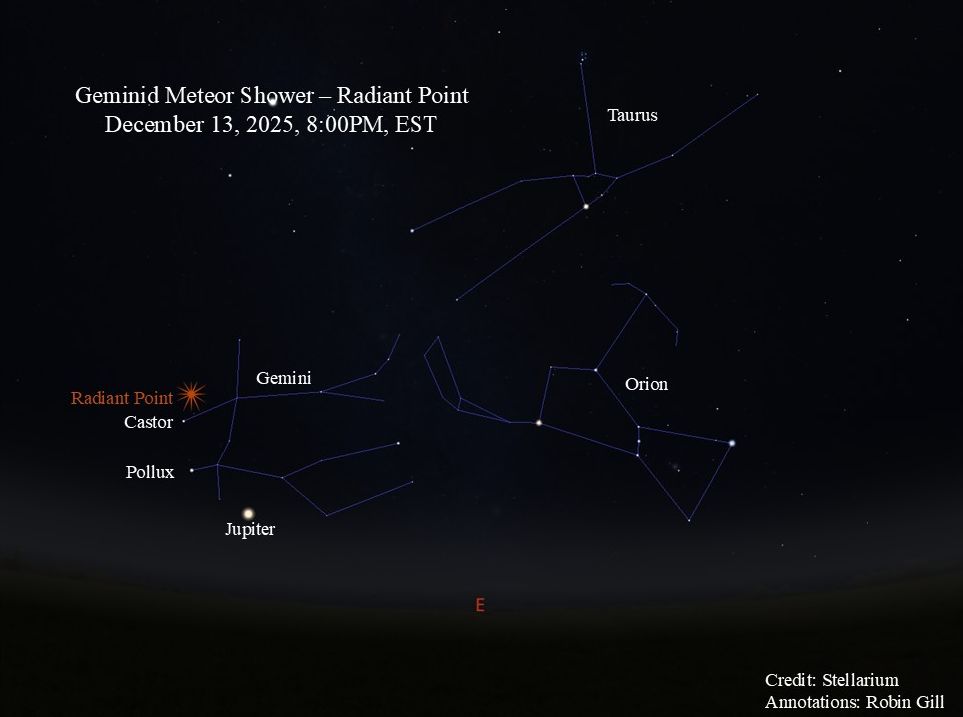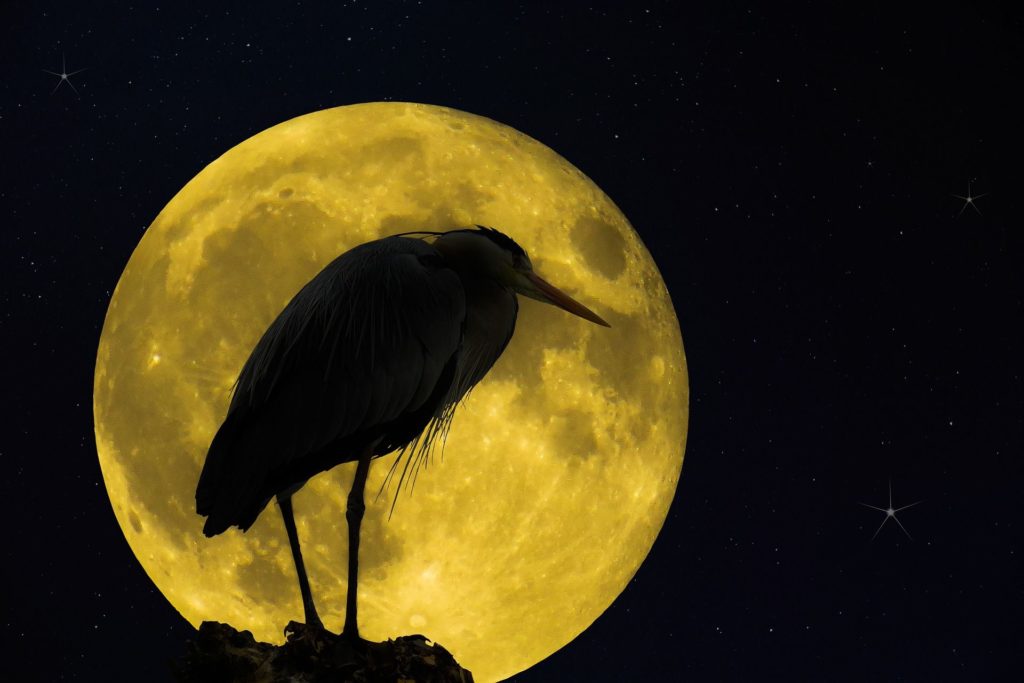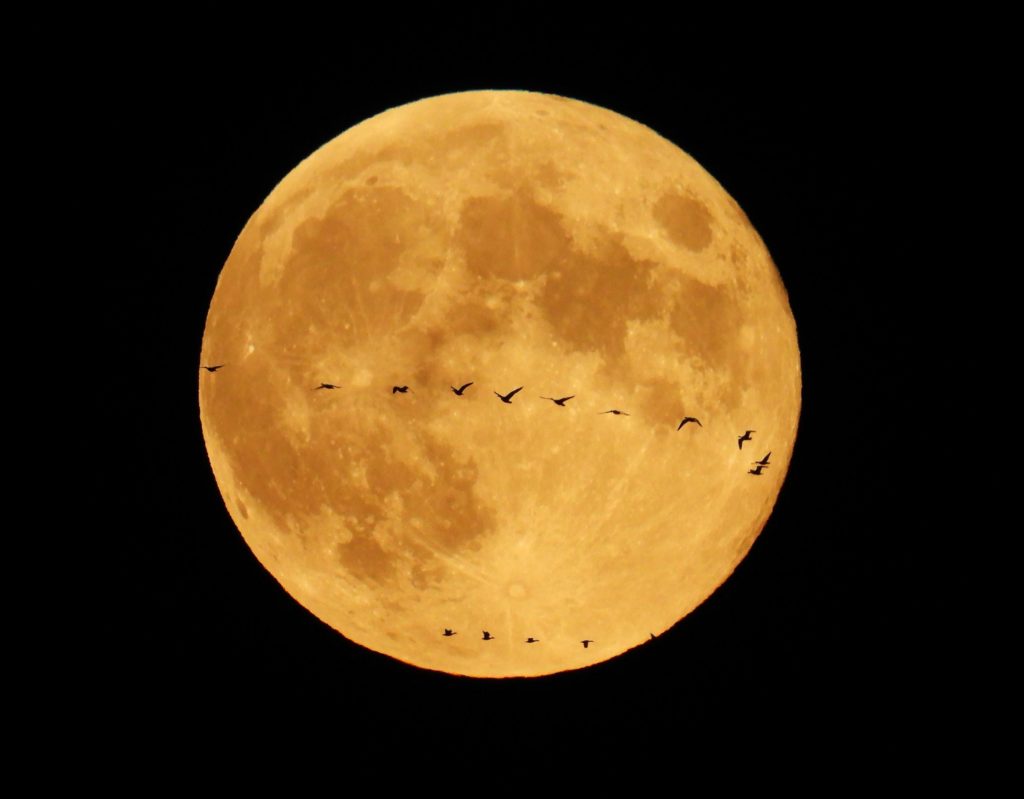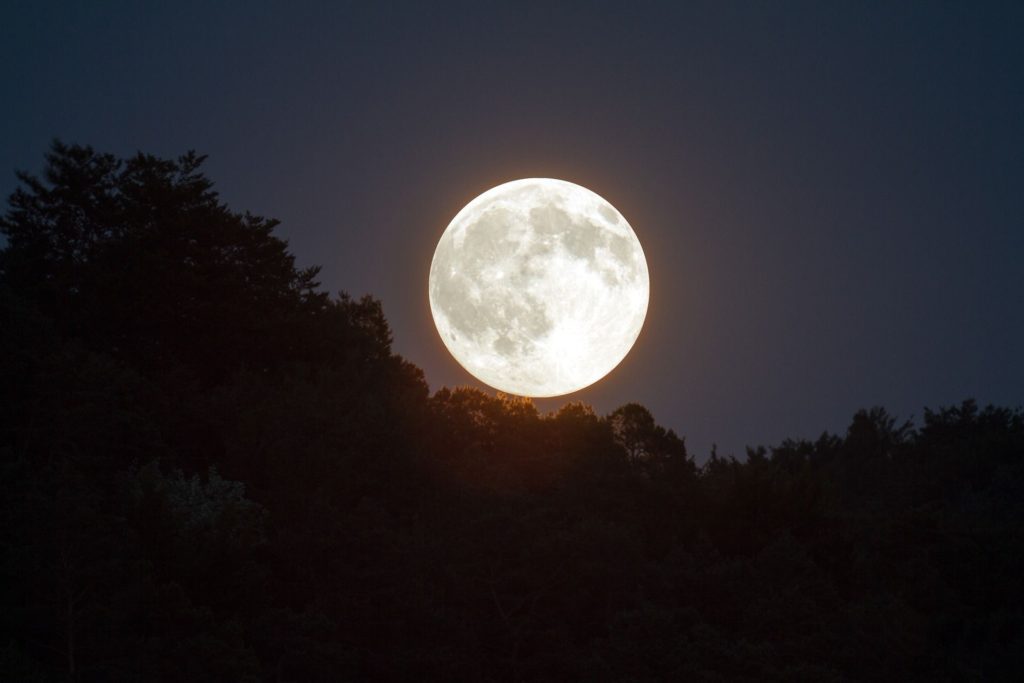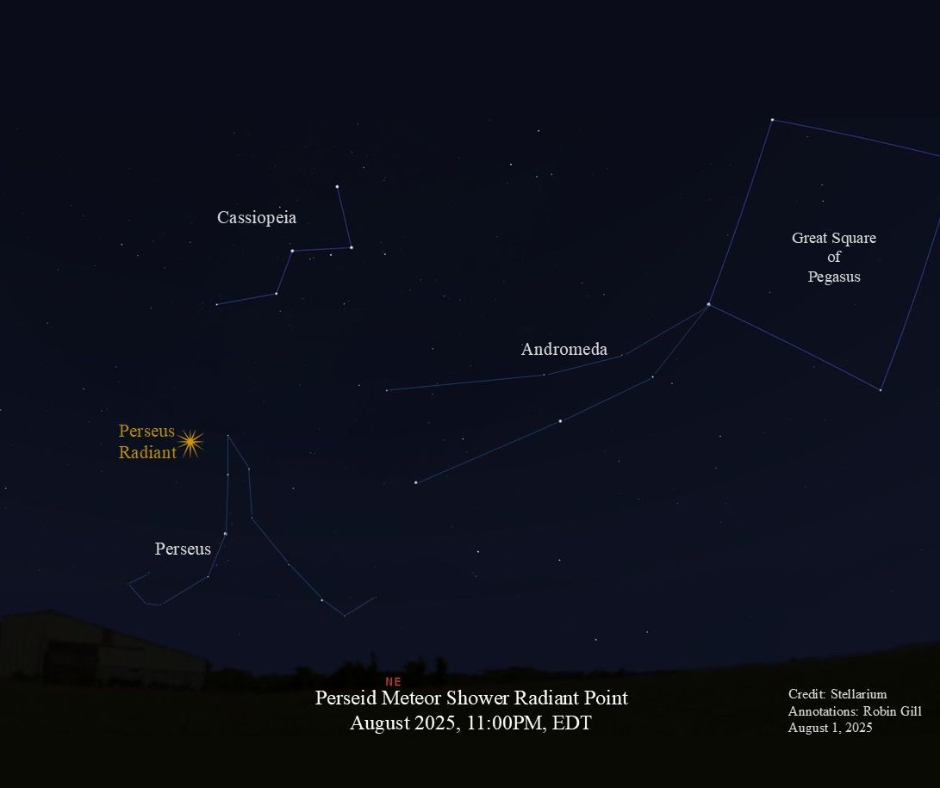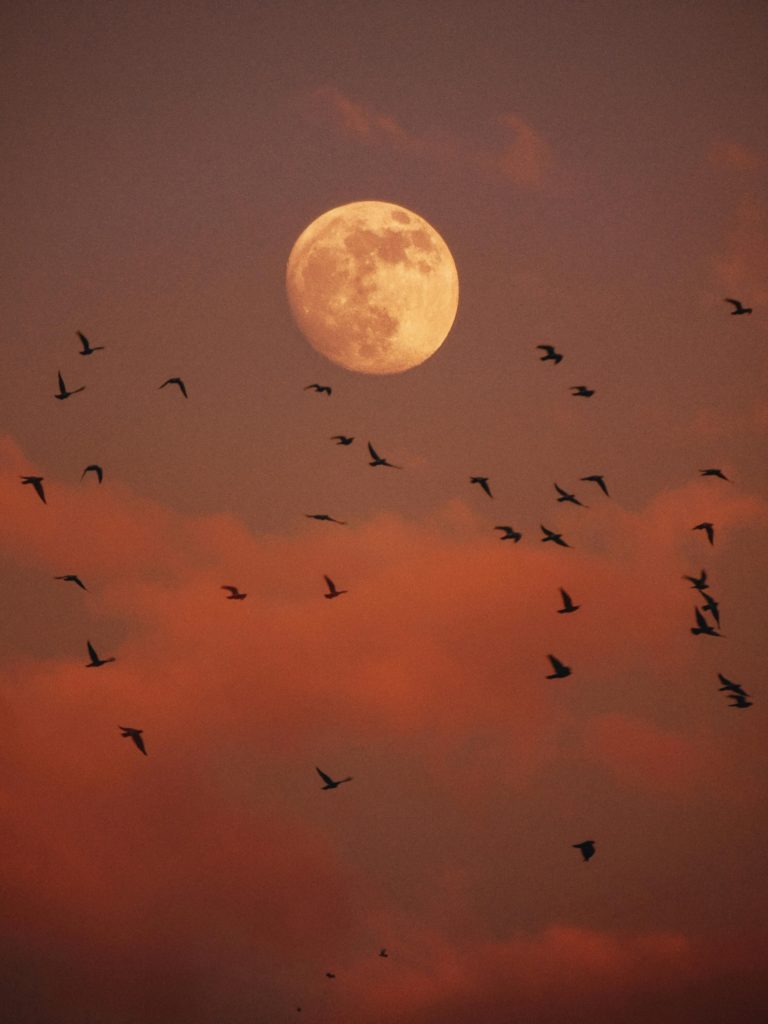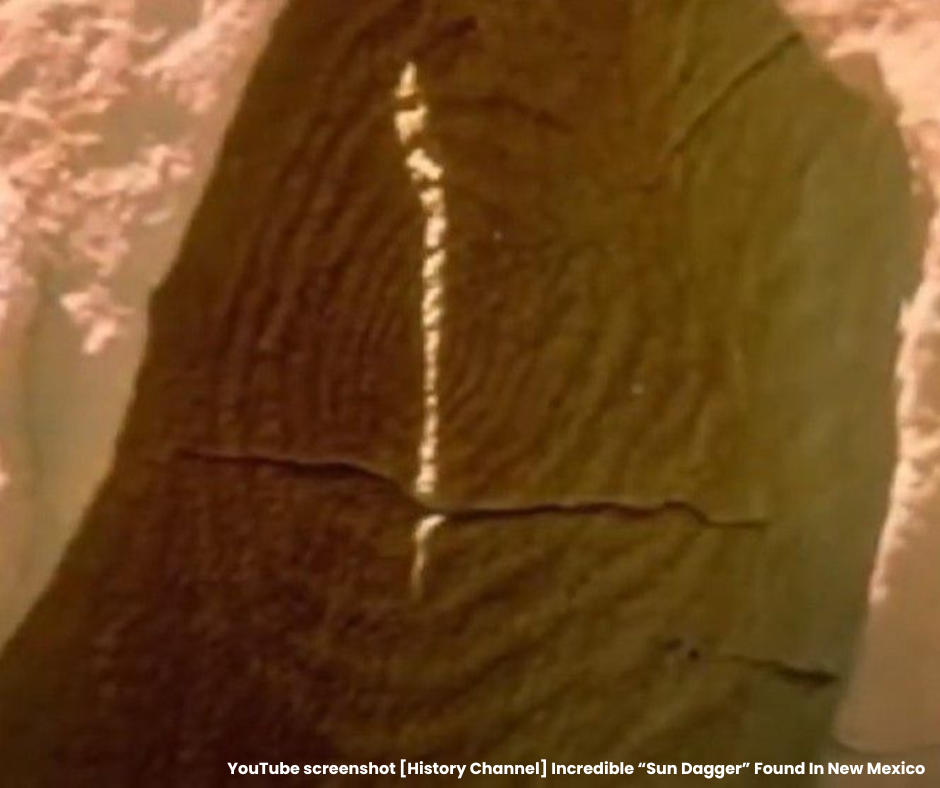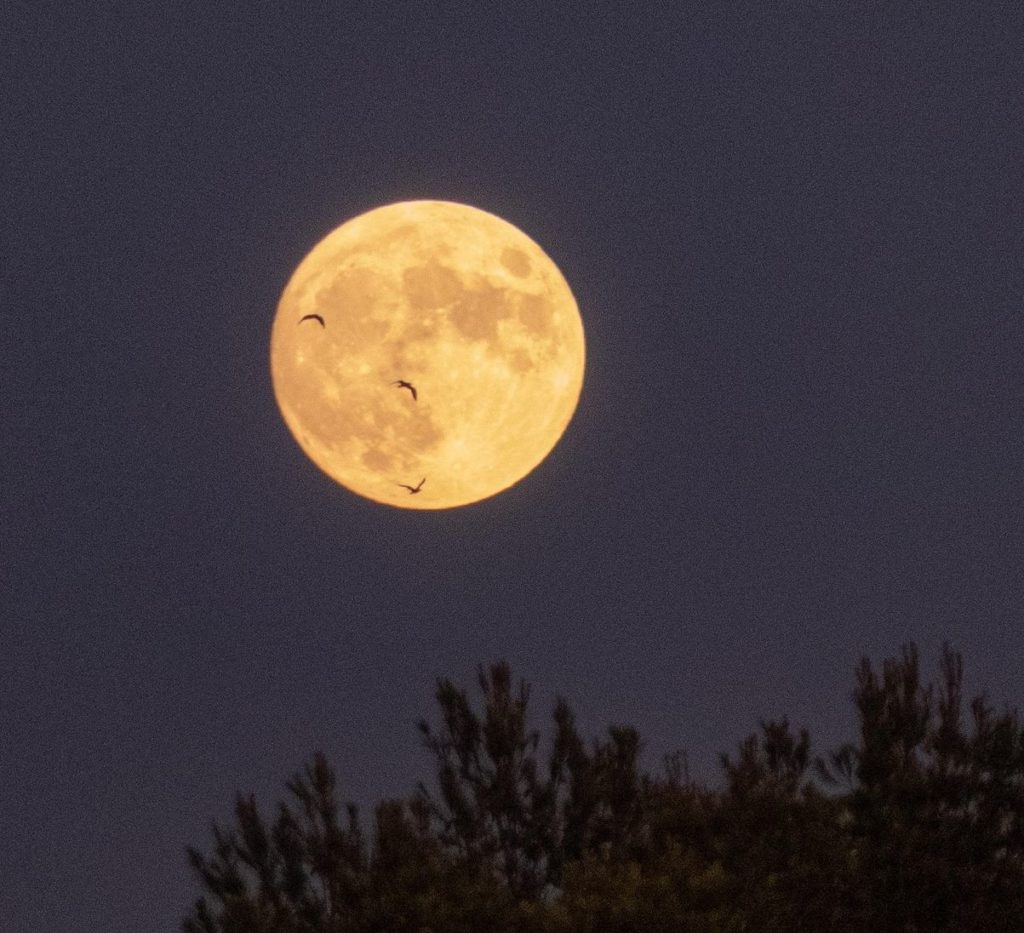Posts Tagged ‘astronomy’
Winter Solstice 2025
Winter solstice, the official astronomical beginning of winter in the northern hemisphere, is almost here. It will happen on Sunday, December 21, 2025, at exactly 10:03AM EST. Regardless of where you live in the northern hemisphere the winter solstice happens at the exact same time for all of us! It occurs when the Earth’s northern…
Read MoreGeminid Meteor Shower 2025
The Geminid meteor shower is a perennial favorite and is well known for being the best meteor shower of the year. Earth’s orbit passes through the Geminid meteor stream every year from about November 19 to December 24. 2025’s expected peak, when the most meteors can be seen, is from Saturday night, December 13 into…
Read MoreNovember 2025 Full Beaver Moon
November’s full Beaver Moon occurs on Wednesday, November 5, 2025, at 8:19AM EST. Unfortunately, the Moon has set and is well below the horizon by this time. Not to worry! The Moon will still look round and bright when it rises later that evening at 5:04PM. Native Americans were very in tune with nature and…
Read MoreOctober 2025 Full Harvest Moon
On Monday, October 6, 2025, we will be treated to a full Harvest Moon. The Moon will look full and round when it rises at 6:38PM EDT. However, it won’t be an official full Moon until 11:47PM – the exact moment the Sun and Moon are on opposite sides of the Earth. Wait, isn’t October’s…
Read MoreSeptember 2025 Full Corn Moon
September’s full Corn Moon occurs at exactly 2:09PM EDT on Sunday, September 7, 2025. This is the exact moment the Sun and Moon are on opposite sides of the Earth. At this moment in time the Moon will be below the horizon, but it will still look full and round when it rises later that…
Read MorePerseid Meteor Shower, August 2025
The shooting stars of August, the Perseid meteor shower, is the brightest and most popular meteor shower of the year. And the best part is you don’t need any special equipment to see it – just your eyes. The Perseid meteor shower occurs when the Earth passes through the debris stream left behind by Comet…
Read MoreAugust 2025 Full Sturgeon Moon
On August 9, 2025, we will be treated to the full Sturgeon Moon. If you are up early you can see this Moon at its fullest and brightest at the exact moment it’s full at 3:55A.M. EDT – the exact moment the Sun and Moon are on opposite sides of the Earth. The Moon will…
Read MoreJuly 2025 Full Buck Moon
July’s full Buck Moon will rise on Thursday, July 10, 2025, being its fullest and brightest at 4:37PM EDT. The Moon will be below the horizon when this exact moment of full moon happens. Be outside looking to the southeast at 9:24PM to watch this beautiful Moon rise. Native Americans named Moons after what they…
Read MoreSummer Solstice 2025
Summer solstice, the astronomical beginning of summer, occurs after the Sun sets on Friday, June 20, 2025, at 10:42PM EDT. Solstice is Latin for “Sun Stand Still.” This came from the observation that the Sun’s position appears to stop or stand still in the days surrounding the solstice. For those of us in the northern…
Read MoreJune 2025 Full Strawberry Moon
June’s full Strawberry Moon is the last full Moon of spring. This full Moon happens on Wednesday June 11, at exactly 3:44AM EDT. But it will not be strawberry red in color. The Moon then sets a short time later at 5:36AM. All of this happens before most of us are up for the day. …
Read More
